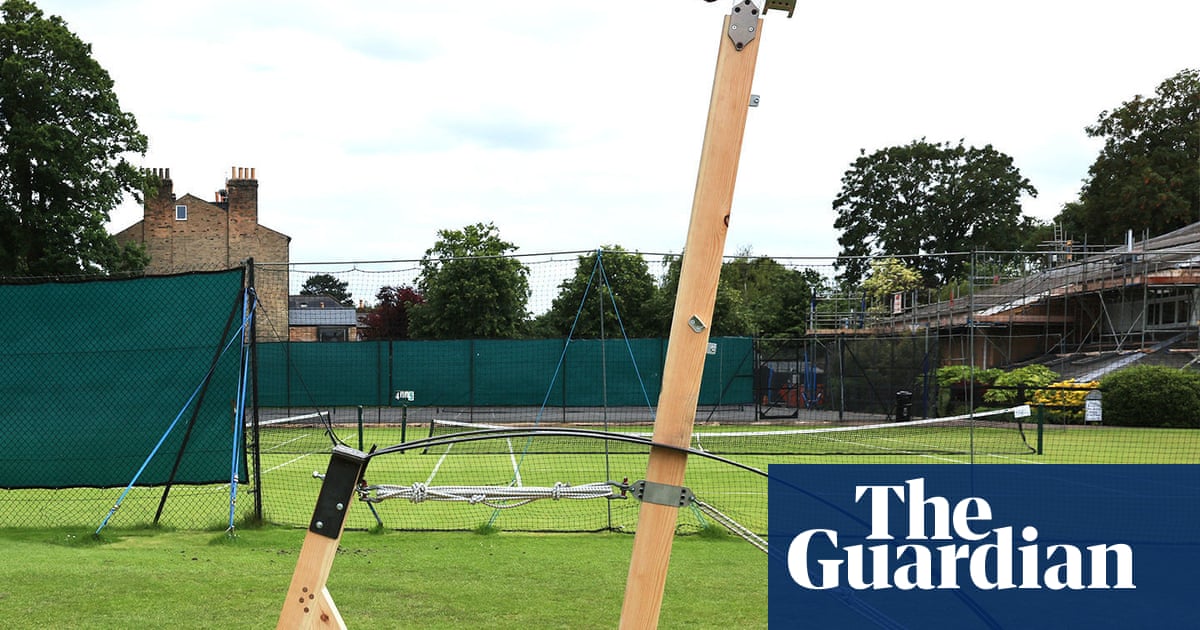A wooden contraption that bowled out an Australian international cricketer four times in 1909 has been re-created by engineers at the University of Cambridge.
The bowling machine was designed by Dr John Venn, the mathematician who gave his name to Venn diagrams, in the early 1900s.
It was reportedly so accurate that when members of the Australian cricket team visited Cambridge in 1909, it clean bowled one of their star batsmen four times.
Engineers re-created the machine, which can launch balls at around 33mph, to use at events to inspire people considering careers in maths and engineering. All they had to work from was a black-and-white photograph of the 7ft contraption and a patent application from the time.
The machine propels the ball using a throwing arm powered by a bungee cord and also puts spin on the ball. When the arm travels, it pulls a string, which turns a spindle and a bobbin, which in turn spins the ball holder and the ball.
Prof Hugh Hunt, a professor of engineering dynamics and vibration at Cambridge, set the university’s engineering department the challenge of rebuilding the machine.
Hunt, who has led teams of investigators on the Channel 4 shows Dambusters: Building the Bouncing Bomb and Attack of The Zeppelins, said: “It’s a great story and an ingenious device, and at the time would have been in a lot of newspapers, but now it’s not really remembered outside the cricket world.
“Most people learn about Venn diagrams at school, but not many know about John Venn’s quirky side – that he invented a bowling machine using wood and string and maths, which bowled out members of the Australian cricket team more than 100 years ago.
“So the idea behind the project was to re-create a bit of history, and to show how much fun you can have with maths.”
Thomas Glenday, the head of design and technical services in the engineering department, said the team had to work out the technical details of the machine. “The patent is around the intellectual property … so we didn’t have a set of engineering drawings to work with,” he said.
“It meant we had to sketch it out for ourselves, figure out how the machine was actually going to work, and how it replicates the skill and speed of a spin bowler.
“The spin has been the key piece, and probably the most complicated part of the design. It’s thinking about the different forces that are acting on the ball simultaneously, and that transition of energy – it makes one hell of a diagram!”
Glenday said radar gun tests showed that their machine was bowling at around 33mph. “It would be nice for it to be throwing balls at 100mph, but it’s not designed to be a production machine. It’s a historic relic, which should be treated as such.”
He said a similar machine today would be made from carbon fibre with a 3D printer, but they wanted to be historically authentic, so used hardwood.
The Cambridge student Alice Bebb, who is the opening batswoman for the university’s women’s cricket team, tested the machine. “It’s like no bowler I’ve ever faced before,” said the 23-year-old, who is in her fifth year reading medicine. “It was like a very tall bowler bowling very close to you and it was quite difficult to predict where it was going to go.”
Dr Venn, who died in 1923 at the age of 88, was president of Cambridge’s Gonville and Caius College.

